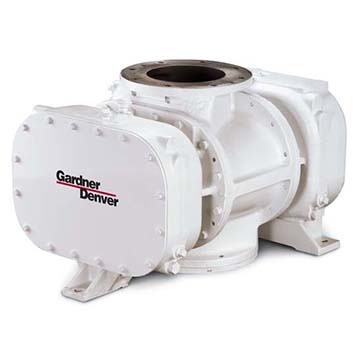Select Your Country/Region
Current Region:
 Global (EN)
Global (EN)
Choose a different country or region to see the content specific to your location
- ARTICLES
- All Articles
- Main Blower Types
How can we help you?
In layman's terms, a blower is a device which increases the velocity of air that is passed through it. Effectively, a blower is designed to move air and gas at low to high pressure to perform a specific function. Blowers serve a broad spectrum of applications in a variety of industries, including: cooling, conveying, ventilating, exhausting, etc. Blowers are typically used when the pressure requirement falls somewhere between that of a fan and that of a compressor.

Blowers work by way of an increase in pressure of either air or gas through the centrifugal movement of a rotor. The blower takes in air/gas via an inlet valve, which causes the impellers (or rotors) to rotate, which creates a centrifugal force which propels the air or gas. While this occurs, the air/gas is continuously compressed with a linear increase in pressure.
There are four main types of blowers. Each of these have their various advantages and disadvantages, and are used for specific functions:
Positive displacement blowers, which are suitable for applications which involve either air or neutral gas, operate in a relatively simplistic fashion. Air or gas enters through a section on one side of the blower which increases in size and exits through the other side which decreases in size. Due to the difference in proportion between the entry and exit points, positive displacement of the air occurs as it is released through the contracting side, increasing air pressure. A particular feature of this kind of blower is that regardless of pressure changes, the speed of airflow remains consistent.
One specific kind of positive displacement blower is the rotary lobe blower. This operates by way of dual rotors which rotate in opposing directions. The blower draws in air, and the lobes spin the air around before impelling it outward.
Due to the rotary lobe function, these blowers produce a high volume of air, and thus are useful for larger vacuum systems. As these types of blowers are used for applications such as aeration tank deoxygenation, the air pressure generated is quite moderate (roughly 15 psi).
Helical screw blowers, much like centrifugal blowers, are able to produce air at higher pressures than rotary lobe blowers. Helical screw blowers utilize two rotors, which are each equipped with lobes (usually two or three). The main rotor fits into the flute of a second rotor.
A helical rotor is designed to give higher and more precise pressure due to the unique helical shape of the lobes on the rotor; the helical geometry works in such a way that it squeezes the air between the rotors. These rotors are also carefully aligned to avoid any contact between the lopes.
Centrifugal blowers are typically used in applications where there is a need for high pressure and variable flow. These blowers have rotating impellers, which increase the speed of the air (or gas) as it passes through. Additionally, as the air enters the blower’s fan wheel, it rotates 90 degrees and exits the blower at a faster rate than it entered. This type of blower is ideal for maintaining continual gas transfer. As gas passes through, kinetic energy is increased, and thus as the gas is discharged from the blower, gas enters to level out the pressure.
A commonly used type of centrifugal blower is the multistage centrifugal blower. Multistage centrifugal blowers are rotating machines able to increase the pressure of air or gasses, by means of the centrifugal force normally transmitted by an electric motor. It has a high pressure tolerance and high flow rates, thus is well equipped for applications which involve the creation of high pressure from small air volume. It is used for a variety of applications such as: aeration in the wastewater treatment industry, landfill gas boosting and powering artificial lungs in the medical sector.
Designed for high-pressure (up to 25 psi) and high-flow (up to 15,000 m3 per hour) demands, high-speed blowers are powered by a motor. Similar to centrifugal blowers, high-speed blowers have impellers at each side which provide dual suction. These direct-coupled impellers are directly connected to a permanent magnet synchronous motor operated by a variable frequency drive (VFD) which allows for high-speeds while maintaining control of flow.
Regenerative blowers are designed for applications where a large volume of air is needed to be moved at a low pressure. Often regenerative blowers have oil-free components, which mean that they are not only easy to maintain but safe, especially in environments in the food and beverage industry and in the medical industry.
Regenerative blowers create pressure through the displacement of air molecules. The impeller spins, which draws in air which is then captured between the blades. As the impeller continues to rotate, the air is pushed forward, where it returns to the base of the impeller. The blower conveys the air by using non-positive displacement, which traps air which is then forced to move.
After covering the four main types of blowers, it can be stated that there is no clear answer as to which type is the best. As they each offer various benefits and drawbacks, it ultimately depends on your application and business needs. For instance, for high-pressure applications, high-speed turbo blowers would be ideal, whereas for lower-pressure regenerative blowers may be preferable.
At Gardner Denver, we offer a wide range of blower products in various configurations.
Visit our Product Page to discover our full range of products, and learn more about how our blower technologies and designs can best suit your application needs.